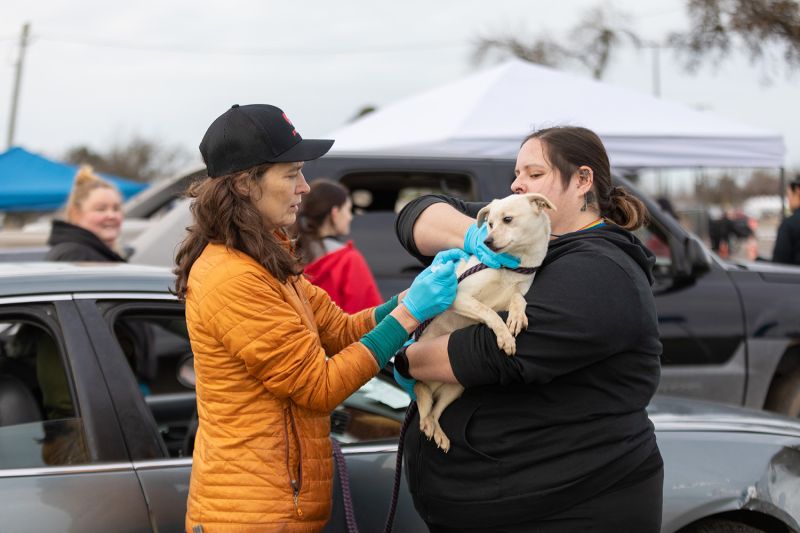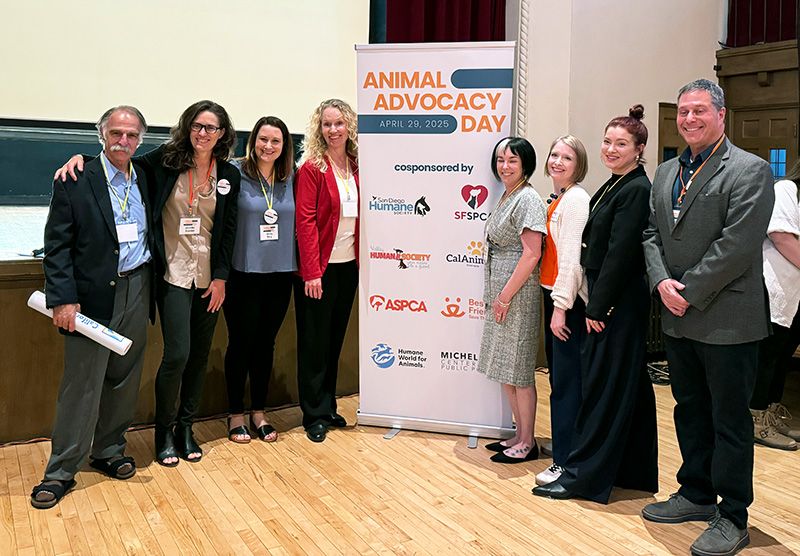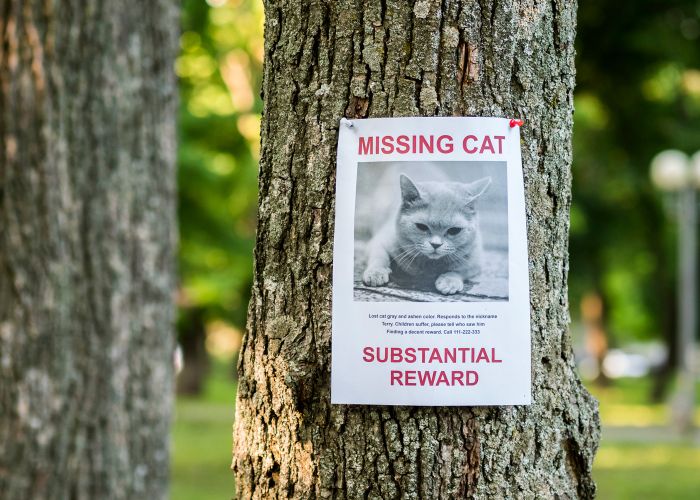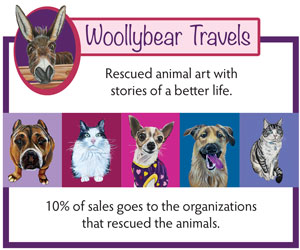Helping animal shelters navigate (and change) laws
Groundbreaking program provides California shelters and rescues with free legal services and more

Cruelty cases that turn into budget-busting custody battles. Contracts that backfire in unexpected ways. Local ordinances that hinder lifesaving programs.
During his 30-plus years as an animal law attorney in California, Bruce Wagman has seen it all.
Shelter work intersects with an array of (often confusing) laws and regulations, says Wagman. But most shelters don’t have the money to hire attorneys, and some don’t even realize they need legal guidance.
In 2018, Wagman’s quest to change this reality brought him to the San Francisco SPCA. In a meeting with CEO Dr. Jennifer Scarlett and her board of directors, he proposed a bold idea: a program to provide free legal services to California shelters and rescues.
The timing was perfect, Scarlett says. She and her team were mentoring a municipal shelter in the Central Valley and had seen firsthand how a shortsighted city ordinance created barriers to adoptions. They were looking for ways to help more shelters and expand their organization’s advocacy impact.
The Shelter Policy and Legal Services program launched in 2020, with Wagman leading the effort. So far, it has assisted nearly 100 shelters and rescues across the state, helped modernize municipal animal codes and implemented a multipronged strategy to increase access to veterinary care.
In this edited interview, Wagman and Scarlett describe how Shelter PALS is advancing animal welfare in California and their hopes for spreading the model to other states.
This program grew out of a recognition that many shelters lacked expert legal support. What kinds of problems were you seeing?
Wagman: A lot of urban myths arise when people don’t know the actual law. One example is holding periods. I’d say more than half the shelters we’ve worked with say, “Well, we follow the 10-day holding period.” And I’d say, “What 10-day holding period?” They’d respond, “Well, the one we’ve always followed.”
While municipalities can set longer holding periods, there’s no 10-day holding period under California state law. The state-mandated holding period ranges from 72 hours to six days, depending on the species, age, whether you’re a municipal or private shelter, and other factors, and there are a lot of exceptions even to those generally applicable rules. We did a webinar specifically on holding periods because it’s so confusing for people.
There’s nothing wrong with shelters holding animals for 10 days or whatever is in the best interest of the individual animal, but it’s important for shelters to be able to move animals out, both for the sake of the animals who will get out and those who must stay, and the shelter staff.
A lot of legal issues arise in cruelty cases, too. California has a very good cost-of-care law, which can be used to get the animals out of the situation and from ownership of the defendant really quickly. But most people don’t know how to use that law to expedite gaining custody.
Your Shelter PALS web page includes sample adoption contracts, transfer agreements and other basic sheltering forms. What prompted you to provide these?
Wagman: When I would review a shelter’s forms, I sometimes thought, “This is horrible. You’re not protected at all. You’re completely liable, or you’re not getting ownership of the animal who’s being transferred to you, and therefore you could be in trouble down the line.”
Sometimes they’re using a form they copied from the internet, or they asked some lawyer who never thought that animals and the law had anything to do with each other. Animal law is so complex and complicated. This is a specialty with many specific strategies and issues.

You also do webinars on different aspects of animal welfare law. Why is education so important?
Scarlett: As a veterinarian, I know medicine, but we as a profession are just terrible about keeping up with the law. We’re also risk-averse, and rightly so: We want to protect our license. There are so many regulations around, for example, compounding drugs, and this has spay/neuter clinics doing whack-a-mole things because of fear and a misinterpretation of the rules. Take, for example, “kitty magic”—
Wagman: This is a combination of three different drugs that are given as a sedative, anesthetic and for pain relief in almost every high-quality, high-volume spay/neuter clinic.
Scarlett: Yes, and there are studies that show it is safer to premix them in a vial than to draw up these micro-micro doses individually in a syringe. And never mind how incredibly time-consuming that is, and wasteful. If mixing it together is the safest way and it’s also time-saving, why would you not do that? Well, because a California regulation was misunderstood. Just clarifying this regulation and educating veterinarians has had an enormous impact on every HQHVSN clinic.
Wagman: It’s just one example of how understanding the law can change the way you’re doing business and taking care of animals—which was one of the primary motivators for the SF SPCA’s Shelter PALS program in the first place.
You also help to change laws. Can you talk about that side of Shelter PALS work?
Scarlett: When we started working with the Stockton city shelter, there was a local ordinance that would not allow the shelter to change the adoption fee, so we couldn’t do special adoption events. They also couldn’t change the fees for redemption of owned pets. And we saw family after family come into the shelter wanting to get their Chihuahua or their pit bull-type dog back. But the redemption fees were so expensive, and the people would leave crying, and then the dog would be euthanized.
So we started working with the city council to change the ordinance. As soon as the shelter had control to do what was right for the best outcome for the animals, local adoptions skyrocketed. And that was our first insight into, if it’s happening here, this is probably happening to a lot of other smaller shelters.
Wagman: We get a lot of requests to review local ordinances. We’ve done at least six complete reviews of entire municipal codes around animals, which are sometimes 80 pages long. Most of them are outdated. My favorite example is from when I reviewed the Pasadena code. I advised them that they could remove the ordinance that specifically said you could not walk your chimpanzee on a leash on Sundays. It was written in 1957, and it was still on the books in 2020.
What are some other common issues your shelter and rescue clients seek advice on?

Wagman: I get consults every day. I do a lot of holding period consults. And consults on how to do a cruelty investigation, starting with the investigation all the way through evidence collection and prosecution. We’ve done a bunch of smaller litigation cases for shelters as well as some larger ones with the aid of our network of pro bono partners. Veterinary care issues are also huge, and I do a lot of advising on community cat programs and ordinances.
How is Shelter PALS helping to expand access to veterinary care?
Wagman: In California, more than half of shelters don’t have a veterinarian. So in many cases, we can’t get animals out of the shelter, because we can’t get the veterinarian in to perform the mandatory spay/neuter before adoption.
We’re planning a webinar in partnership with the California Veterinary Medical Association which is about encouraging veterinarians to spend some time at the shelters, whether it’s full-time or part-time. And we’ve got a premises permit program so veterinarians can be registered to help at the shelters. In California and many other states, any facility providing veterinary services to the public needs a special permit, and it has to meet certain standards with respect to the facilities and operations.
Another main way we’re working to address access to care is increasing what licensed registered veterinary technicians or veterinary nurses can do. We successfully pushed for a state law that clarifies what RVTs and veterinary assistants can do and another that allows RVTs to conduct vaccine and parasite control appointments without requiring a veterinarian’s physical presence, as long as the veterinarian is available by phone. We’re also working with regional workforce development groups to get RVT programs to increase the number of RVTs.
It’s been five years since you started Shelter PALS; is there anything about the program that has surprised you?
Scarlett: What’s surprised me is how useful it has been to address access to care. When we started, we thought it was going to be around shelter regulations, and it is, but as the veterinary shortage came to light, the program pivoted and has been so impactful in helping us design programs and expand our ability and others’ ability to provide medical care.
Wagman: So much about Shelter PALS surprised me. I mean, we just didn’t know. The San Francisco SPCA took a big leap with this program. You couldn’t tell if this crazy idea was going to work. Five years in, it’s pretty clear that it’s working strong. Now we’ve got shelters in other states interested in replicating this, and we have prepared the model.







